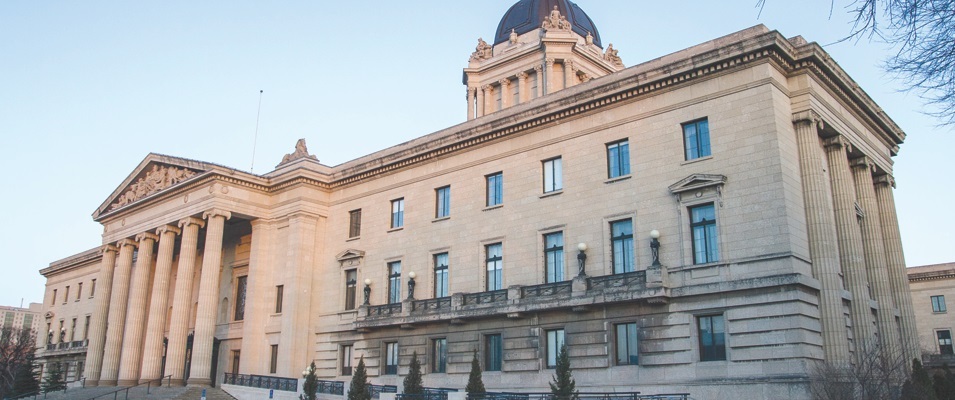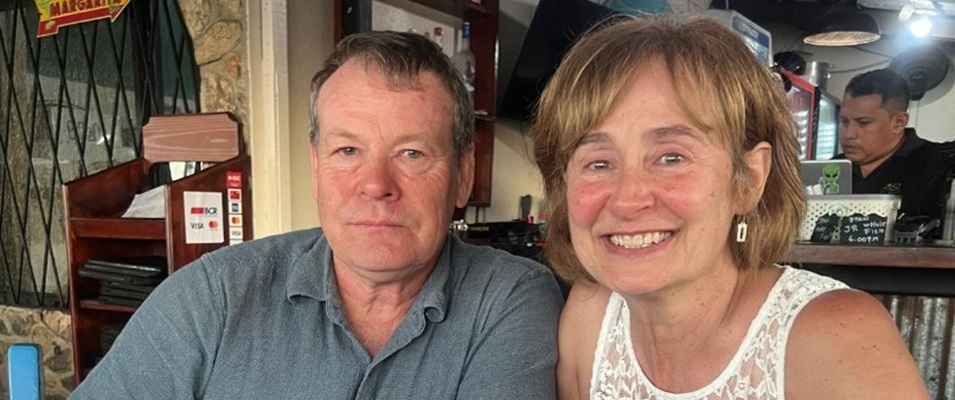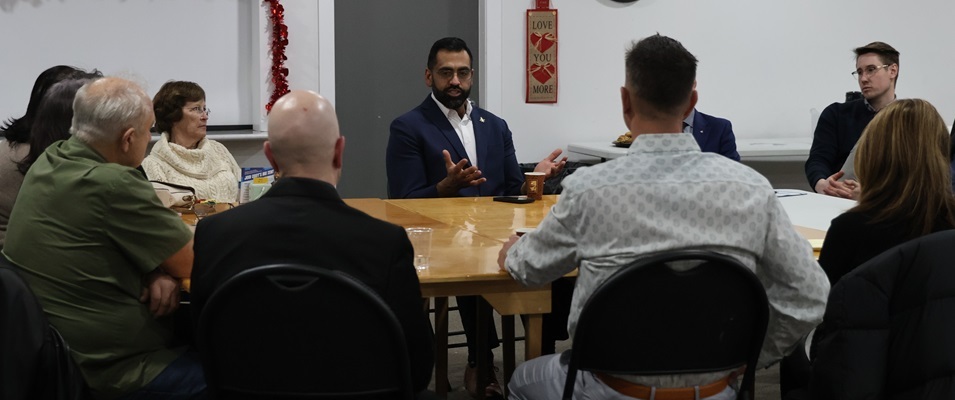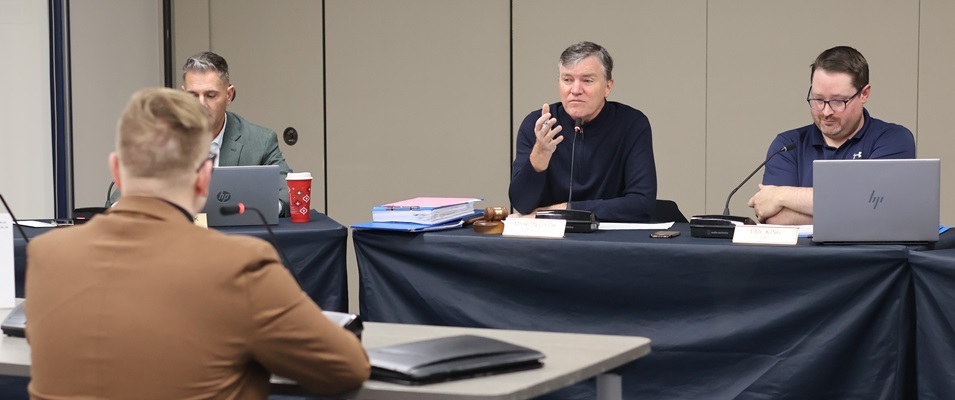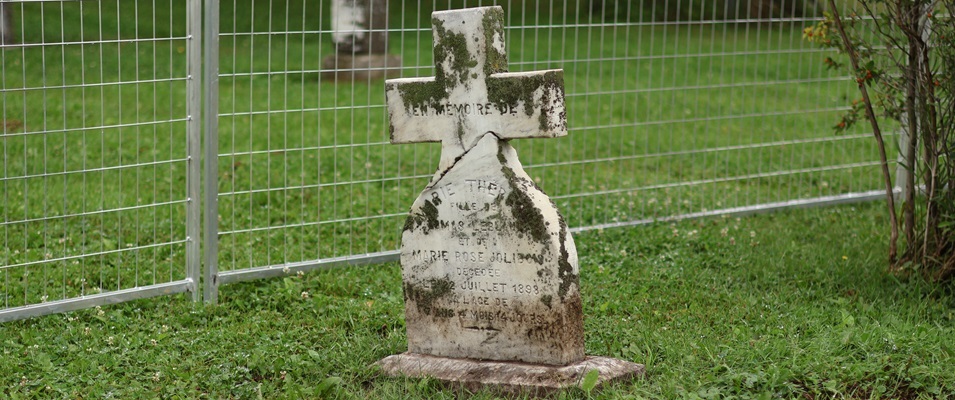
For the past seven years, a prime piece of real estate in St. Adolphe—namely, 420 Main Street, formerly the site of a nursing home—has remained untouched.
It hasn’t been for a lack of trying. Two different developers have owned this property and both have made promises to build some type of senior-friendly housing, something that the municipality desperately needs.
In late August, just as construction was about to begin under the lead of the current developer, John Fuchs, the project came to a standstill. According to Fuchs, the RM declined his request for a building permit.
“As a result of at least one confirmed grave, the municipality will not be authorizing any building permits at this time,” CAO Mitch Duval told The Citizen. “We will continue to facilitate discussions between affected parties.”
The confirmed grave belongs to Marie-Thérèse Leclerc, who died more than 125 years ago at the tender age of seven on July 22, 1898.
Leclerc’s headstone is one of a handful of grave markers that appear to be set apart from the community cemetery located at the rear of the parish next door to 420 Main.
The ancient and mossy relics that mark the graves of Leclerc and a few others lie just to the north of the parish hall.
In mid-August, in preparation for construction, surveyors hired by Fuchs located the boundary pegs in order to determine the exact location of the legal border separating the parish property from 420 Main.
To everyone’s surprise, Leclerc’s gravestone rests on Fuchs’ side of the newly erected construction fence.
David Boisjoli is a resident of St. Adolphe and board member for the St. Adolphe parish. He became aware of the situation when his sons spotted construction markers separating Leclerc’s grave from the others.
“My two boys work at the parish doing the groundskeeping and upkeep in the cemetery,” Boisjoli says. “They told me, ‘Dad, you should take a look at this. There’s all these high-visibility markers.’ That’s what really kind of got this going.”
Boisjoli and his adult son André set to work to find out what could be done. They contacted both the developer and the provincial government in the hopes of finding ways to preserve and protect young Leclerc’s resting spot.
But it was soon discovered that the impending development at 420 Main Street held even greater implications. According to local historians, beneath the soil of Fuchs’ property lie the unmarked graves of countless other deceased infants and children.
The Area’s History
At 72 years of age, Lina Legal has lived most of her life in St. Adolphe. She was born and raised here. Although she left for a period of time during her early adulthood, she returned in 1999 to care for her aging mother. She never left again.
Legal recalls when the property at 420 Main Street was home to the village’s combined convent and school. She attended the school as a child between 1957 and 1965.
According to Legal, the convent-school was first built in the early twentieth century and nuns were brought directly from France to run it. The community’s parish hall was then erected to the immediate south of the convent-school.
Legal says that it was common practice back in the day to reserve a special place in a cemetery for infants and young children.
Legal’s brother was one of these infants. He was born in 1949 and died three months later. His grave, along with many other infant graves, is located in the section of land between the church and the convent.
Many of these graves were marked with simple wooden crosses, she adds, which bore the name, birth, and death date of the deceased. Anything more permanent was unaffordable to many people of that era.
“When we had the 1950 flood, many of the crosses were [washed] away by the water,” Legal says.
Years later, these unmarked graves were memorialized by a granite cairn placed at the southeast corner of the parish. It’s etched with the names of dozens of deceased who had been listed in the parish’s records.
In the 1970s, the convent-school was closed when the government centralized the school system. According to Legal’s recollection, the land on which the old school sat was sold by the nuns to a private developer.
In short time, the school was transformed into a nursing home for the aging. Legal’s mother worked as the director of the home for ten years.
“When they transformed the convent into a nursing home, they had to build fire escapes,” Legal says. “One of them was on the south side of the building. When they built the piles on which the stairway would be built, they hit some bones.”
The nursing home was eventually closed, and in 2017 the bones of the old building were brought down after it was deemed unsalvageable. Now, in 2024, as Legal learned that new construction was planned for the site, she says her heart sank.
“I was angry that this was happening again,” Legal says. “I felt that my brother’s grave was going to be desecrated. There are laws across the country [to protect] cemeteries. They have to be respected. You cannot build over somebody’s grave.”
According to Legal, there is only one adequate way to deal with the section of land under which the graves lie and that is to donate it back to the church for their custodianship and protection.
Church Stance
Father Gregory Djiba has been the resident priest in St. Adolphe for the past six years.
“Our concern is to protect the graves out of respect for the bodies that are buried there and for the good of their families,” Djiba says. “If the developer can do his work and leave those graves, I think that would be good.”
Prior to the COVID-19 pandemic, Djiba recalls a special meeting of the parish board of directors at which they learned of the potential development of 420 Main.
The board resolved, at the time, to seek out the help of the province and the diocese in order to ensure that the unmarked graves would be respectfully treated.
When the pandemic struck, he says, the development was stalled and so was the board’s momentum when it came to proactive action.
A Frustrated Developer
Fuchs has been in ownership of the land at 420 Main Street for about two years. It’s taken this long to get construction started, he says, due to the creation of a development agreement between himself and the RM and the amount of paperwork that is required in cases like his.
It would be an understatement to say that he’s anxious to get this project off the ground.
If Fuchs has his way and the project is allowed to proceed, the first phase will, in fact, provide what many in the RM have been hoping for: easy access housing suitable for aging adults.
Fuchs plans to build 16 bungalow-style homes with garages in the back section of the lot, an area flanked on one side by the school and on the rear by the dike.
Phase two will focus more on young families due to the nearby school. This project includes two units with seven two-storey homes in each. A seven-plex will be constructed on either side of the property near where the nursing home once stood.
Fuchs says that he was as surprised as anyone to discover that the ancient headstone belonging to Leclerc rests on his side of the property line. He’s even more surprised to hear, for the first time, about the unmarked graves.
Now, with his project at an indefinite standstill, Fuchs is hopeful that the RM will agree to a solution which could satisfy everyone. That plan, for Fuchs, would be to begin construction of the bungalows at the back of the lot as anticipated.
“Let me just start with that,” Fuchs says. “In the meantime, do your due diligence on the front part while I’m building this part.”
Even if they did nothing at all with the unmarked graves, Fuchs says that he doesn’t believe his phase two plan would affect them in any negative way.
The two-storey homes will have no basement, he says, only an approximate two-foot foundation. Since graves are typically much deeper than that, Fuchs believes he can manage the build without disturbing the remains below.
But in the end, he’s not prepared to wait much longer to get this project off the ground.
“I’ve told [the RM], ‘If you cancel, I’ll just move on,’” Fuchs says. “I’m not going to pursue this any further because I’ve spent enough time and money on it.”





